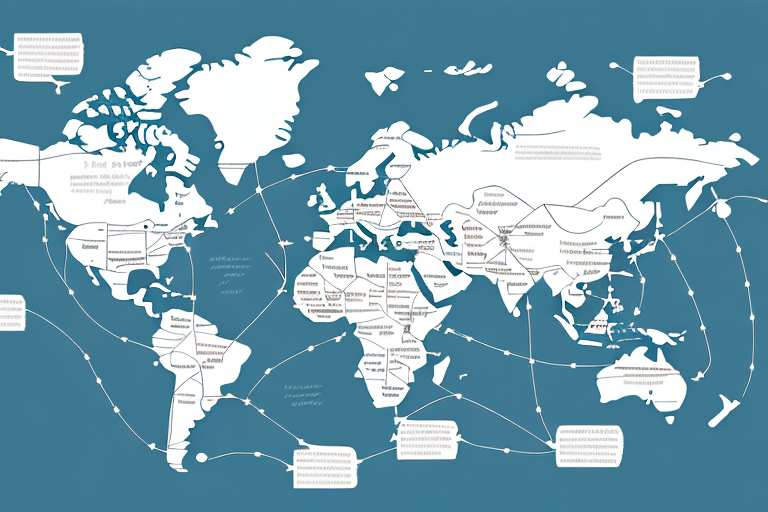Understanding Courier Rates Per Mile: What You Need to Know
Courier services are a vital component of many businesses. Whether you need to ship products to customers, pick up supplies from your suppliers, or send important documents to clients, working with a reliable courier service can streamline your operations. One of the most important factors to consider when partnering with couriers is the rates they charge per mile. Here's an in-depth analysis to help you understand courier rates and make informed decisions for your business.
Importance of Grasping Courier Rates Per Mile for Your Business
Effective expense management is crucial for any business. While couriers are indispensable for daily operations, they can also represent a significant cost. Understanding how courier rates are determined allows you to budget accurately for shipping expenses and choose the most cost-effective courier for each shipment.
Distance is a primary factor influencing courier rates, as many services charge per mile. The longer the distance your package needs to travel, the higher the shipping cost. By calculating the distance between your business and the delivery destination, you can estimate shipping costs and select a courier that offers the best rates for that range. Additionally, a clear understanding of per-mile rates can empower you to negotiate better terms with couriers, especially if your business frequently handles long-distance shipments.
According to the Statista report on freight shipping costs, efficient management of shipping expenses can significantly impact a company's bottom line, underscoring the importance of understanding courier rate structures.
Key Factors Influencing Courier Rates Per Mile
Several variables can affect the cost of courier services:
- Distance: The primary determinant of courier rates is the distance a package must travel.
- Package Size and Weight: Heavier and larger packages generally incur higher shipping costs.
- Service Level: Options like same-day or next-day delivery come at a premium compared to standard delivery.
- Item Type: Shipping hazardous or perishable materials may require additional handling, increasing costs.
- Transportation Mode: Couriers using bicycles may offer lower rates in urban settings compared to those using motor vehicles.
- Time of Day: Deliveries during peak hours may cost more due to increased traffic and demand.
Understanding these factors can help you anticipate and manage shipping costs effectively.
Pros and Cons of Various Courier Delivery Methods
Choosing the right delivery method depends on your specific needs and budget:
- Standard Ground Shipping: Cost-effective for domestic shipments but slower delivery times.
- Same-Day Delivery: Expensive but ideal for urgent shipments requiring delivery within hours.
- Overnight Delivery: Balances cost and speed, ensuring next-day delivery.
- International Shipping: Involves complexities like customs regulations and additional fees but is essential for global businesses.
Each delivery method offers unique advantages and drawbacks. Assessing your business needs will help you select the most appropriate option.
Calculating Shipping Costs Using Courier Rates Per Mile
Accurately calculating shipping costs involves considering various factors:
- Determine the distance between the origin and destination.
- Assess the size and weight of your package.
- Choose the desired level of service.
- Account for additional fees such as fuel surcharges or insurance.
For instance, the PwC Freight Future Report highlights the importance of integrating these variables to obtain accurate shipping cost estimates. Comparing quotes from multiple courier services can also help you secure the best rates for your specific shipping needs.
Strategies for Negotiating the Best Rates with Couriers
Negotiation can lead to substantial savings on courier services:
- Volume Discounts: Shipping large quantities can often secure lower rates.
- Flexible Scheduling: Opting for off-peak delivery times may qualify you for discounted rates.
- Long-Term Partnerships: Building a sustained relationship with a courier can result in more favorable terms and personalized service.
- Transparent Communication: Clearly outline your shipping needs and expectations to facilitate better negotiation outcomes.
Regularly reviewing your shipping invoices ensures that you are billed accurately and can identify opportunities for further cost reductions.
Impact of Technology on Determining Courier Rates
Technological advancements have revolutionized how courier rates are calculated and services are delivered:
- Data Analytics: Advanced algorithms analyze factors like distance, package weight, and delivery capacity to optimize pricing strategies.
- Real-Time Tracking: GPS and mobile applications provide customers with real-time updates, enhancing transparency and customer satisfaction.
- Automation: Streamlined operations through technology increase efficiency, allowing couriers to offer more competitive rates.
As highlighted in the McKinsey report on courier services transformation, embracing technology is essential for couriers to remain competitive and meet evolving customer expectations.
Selecting the Right Courier for Your Business
Choosing an appropriate courier service involves evaluating several key aspects:
- Reputation and Reliability: Research reviews and testimonials to gauge the courier's performance and reliability.
- Service Offerings: Ensure the courier provides the delivery options that align with your business needs, such as same-day or international shipping.
- Coverage Area: Verify that the courier can deliver to all necessary locations, whether domestically or internationally.
- Cost Efficiency: Balance the cost of services with the value they offer to ensure alignment with your budget.
Leveraging services like TrustRadius can provide insights into various courier services based on user reviews and ratings, aiding in informed decision-making.
Avoiding Common Pitfalls with Courier Services
To maximize efficiency and minimize costs, avoid these common mistakes when using courier services:
- Poor Packaging: Inadequate packaging can lead to damaged goods and increased shipping costs.
- Incorrect Delivery Method: Selecting an inappropriate delivery method can result in delays and unnecessary expenses.
- Inaccurate Shipping Quotes: Failing to double-check shipping quotes may lead to unexpected costs.
- Incomplete Delivery Information: Providing incorrect or incomplete recipient details can cause delivery failures and additional fees.
Ensuring meticulous preparation for each shipment can prevent these issues and enhance overall shipping efficiency.
Future Trends in Courier Rates Per Mile
The courier industry is continually evolving, influenced by technological advancements and changing market dynamics:
- Drone Deliveries: Emerging drone technology promises faster and potentially more cost-effective deliveries, particularly in congested urban areas.
- Same-Day and On-Demand Services: The surge in e-commerce demands rapid delivery options, pushing couriers to offer more flexible and expedited services.
- Automation and AI: Increased use of automation and artificial intelligence can further optimize delivery routes and pricing models.
Staying abreast of these trends is crucial for businesses to adapt their shipping strategies and leverage advancements for cost savings and improved service delivery.
In conclusion, a comprehensive understanding of courier rates per mile enables businesses to manage shipping costs effectively, select the most suitable delivery methods, and stay competitive in an ever-evolving market landscape.






















